“This Changes Everything” (2018 production, 2019 release). Cast: Marisa Tomei, Jessica Chastain, Reese Witherspoon, Natalie Portman, Chloë Grace Moretz, Meryl Streep, Zoe Saldana, Cate Blanchett, Gillian Anderson, Rashida Jones, Sharon Stone, Amandla Stenberg, Heather Graham, Rosario Dawson, Geena Davis, Mary-Louise Parker, Sandra Oh, Tiffany Haddish, Taraji P. Henson, Rose McGowan, Brit Marling, Ellen Pompeo, Amber Tamblyn, Yara Shahidi, Jackie Cruz, Lena Dunham, Marg Helgenberger, Tracee Ellis Ross, Judd Apatow, Alan Alda, Paul Feig, Shonda Rhimes, Jill Soloway, Patty Jenkins, Catherine Hardwicke, Mira Nair, Kimberly Peirce, Lesli Linka Glatter, Julie Dash, Lynne Littman, Maria Giese, Cherien Dabis, Courtney Kemp Agboh, Callie Khouri, Anita Hill, Kalpana Kotagal, Melissa Goodman, Maureen Ryan, Howard Rodman, Clifford Alexander. Director: Tom Donahue. Web site. Trailer.
Movies and TV shows are wonderful outlets for entertainment, information and enlightenment. They provide us with tremendous sources of inspiration and creativity, especially for younger impressionable viewers. But are they everything they truly can be? Are they serving the wants and needs of all the audiences out there? What’s more, are they making available opportunities for creative expression to everyone in the business? If one were to ask many women in the entertainment industry, their answers would likely be characterized by dissatisfaction, disillusionment and frustration. And, to learn where those feelings come from, one need only look to the practices and outlooks of the decision-makers in the business, revelations made loud and clear in the eye-opening new documentary, “This Changes Everything.”
The movie and television industries are replete with many talented women, both in front of and behind the camera. But are they all getting a fair shake when it comes to work opportunities? Moreover, when it specifically comes to on-screen appearances, are those that are available giving women enough chances to show what people of their gender can do?
As many prominent women in the business contend, the foregoing are important questions, because their answers have ramifications that extend far beyond their professional accomplishments. “This Changes Everything” takes a critical look at these issues, examining and statistically documenting the disproportionate number of jobs open to women in behind-the-scenes careers, such as directors, producers, showrunners and technical positions. Likewise, the picture does the same when it comes to comparing the number of available roles and the amount of allotted screen time for women compared to their male counterparts. It also shines a bright light on the limited range of roles in which women are typically cast, most of which are restricted to parts as girlfriends, sidekicks and victims in need of being rescued.
[caption id="attachment_10860" align="aligncenter" width="300"] Actress-producer Geena Davis discusses the disparity in opportunities for women in the film and television industries in the eye-opening new documentary, “This Changes everything.” Photo courtesy of Fathom Events.[/caption]
Actress-producer Geena Davis discusses the disparity in opportunities for women in the film and television industries in the eye-opening new documentary, “This Changes everything.” Photo courtesy of Fathom Events.[/caption]
Those in the industry who are concerned about the foregoing worry about the repercussions associated these issues, not just for those in the business, but also in society at large. Why? Because of the messages these practices send to viewing audiences, especially children. For instance, if young girls are only exposed to images of women who fall into the limited range of roles noted above, what does that tell them about who they are and what they can become in life? Those who might aspire to careers, callings or lifestyles different from the three options previously discussed may never discover that other possibilities exist simply because they don’t see any female role models depicted in those capacities or scenarios. And, given that our contemporary entertainment vehicles strongly define the nature of our culture, they carry tremendous impact on who we are, how we see ourselves and what we believe we’re capable of, particularly during our formative years.
To that end, the subjects interviewed for this film – including representatives of both genders – contend that women need more opportunities in the business to get their voices heard and their viewpoints expressed, not only because they have something to say creatively, but also to help play a greater role in shaping society’s outlooks (and thus the roles in which young women can see themselves). Those are some rather staggering implications, notions that are typically overlooked, either unconsciously or intentionally.
It’s somewhat ironic that these circumstances exist compared to the early days of Hollywood, when women were on a nearly equal footing with their male counterparts. During the Silent Era, women held many prominent roles as writers and directors, some of them wielding considerable influence and commanding lucrative contracts. However, by the time talkies began to be made in the late 1920s, things began to change. As Hollywood now had to build large, expensive sound stages, that called for hefty infusions of cash, a resource controlled by bankers, most of whom were men, and those finance men only wanted to deal with other men. That’s when the balance tipped to the male side, where it has stayed ever since.
[caption id="attachment_10861" align="aligncenter" width="300"] Veteran performer Meryl Streep observes how changing our entertainment changes our culture in the new documentary, “This Changes Everything.” Photo courtesy of Fathom Events.[/caption]
Veteran performer Meryl Streep observes how changing our entertainment changes our culture in the new documentary, “This Changes Everything.” Photo courtesy of Fathom Events.[/caption]
To be sure, there have been instances where women have stepped to the fore, achieving impressive accomplishments both as on-screen protagonists and behind the camera. However, progress has largely taken the form of fits and starts that have not been able to sustain themselves. Cinematic blockbusters like “Thelma & Louise” (1991), for example, made huge, temporary splashes, yet all the prognostications that such releases would change things from there on out failed to materialize.
So why have women been left out of the game? There are various reasons, such as an industry that operates on a “good old boys” mentality. Then there are largely ineffective professional policies, such as self-regulation to supposedly ensure equal opportunities, a largely toothless enforcement regime. Prejudices against women being unable to get the job done also run rampant, despite plenty of examples to the contrary, both on the big and small screens.
Perhaps the most insidious reason, though, is an unconscious bias against inclusion. When male decision-makers move forward with their projects, they automatically tend to think in terms of which men for which roles, both on- and off-screen. Because women receive no consideration, they don’t make the cut for these opportunities. And that is what leads to male-dominated entertainment vehicles, which brings us back to the aforementioned issue of exclusion in on-screen representation and the attendant lack of role models.
If all this weren’t enough, though, women also face more than their share of indignities at the hands of male colleagues. The sexual harassment allegations raised against industry bigwigs like Harvey Weinstein are well known, but these high-profile cases are just the tip of the iceberg. As one actress in the film notes, she had an experience during a shoot where a male professional suggested that she sit on his lap when going over the lines for a scene, a proposition to which she responded by asking, “Do you have Tom Hanks sit on your lap when running the lines with him?”
[caption id="attachment_10862" align="aligncenter" width="300"] Actress Taraji P. Henson speaks about the opportunities available for women in general, and women of color in particular, in the revealing new documentary, “This Changes Everything.” Photo courtesy of Fathom Events.[/caption]
Actress Taraji P. Henson speaks about the opportunities available for women in general, and women of color in particular, in the revealing new documentary, “This Changes Everything.” Photo courtesy of Fathom Events.[/caption]
The indignities go beyond that as well. All too often, men in the business seek to objectify their female counterparts, pressuring actresses to do things for their roles that are designed to fulfill their aspirations for what constitutes the ideal woman, one who is essentially defined by sexuality and nothing else. For instance, actress Chloë Grace Moretz recounts an incident from one of her early roles where she found padded bra inserts (crassly referred to as “chicken cutlets”) left in her dressing room to accentuate her bust line, a message intended to let her know that nature hadn’t endowed her sufficiently enough to fulfill the vision the filmmakers held for her. As a budding young actress, she added, one can imagine what this gesture did to her self-esteem.
All of the foregoing policies and practices have become so ingrained that they have turned into widely held beliefs, particularly among those who are gatekeepers and controllers of the purse strings. And those beliefs have subsequently fueled the manifestation of the reality that is Hollywood, a result not at all surprising in light of the power of the conscious creation process, the philosophy that maintains we materialize the existence we experience through these metaphysical building blocks.
However, despite the power of these driving forces, they are by no means fixed or unchangeable. There have been times over the years, for instance, when progress – though limited – has been made. Those instances show that change is indeed possible; the trick, however, is figuring out how to maintain it. And, with new tactics in the offing, women in the industry may well be on the verge of instituting practices that could alter the standard operating procedures, a change made possible by implementing new beliefs with different and sustainable outcomes.
[caption id="attachment_10863" align="aligncenter" width="300"] Actress-producer-director Natalie Portman discusses the limited opportunities available for women behind the camera, noting that she herself is one of the few female directors she has ever worked with, as seen in “This Changes Everything.” Photo courtesy of Fathom Events.[/caption]
Actress-producer-director Natalie Portman discusses the limited opportunities available for women behind the camera, noting that she herself is one of the few female directors she has ever worked with, as seen in “This Changes Everything.” Photo courtesy of Fathom Events.[/caption]
For example, many in the business firmly believe in the notion that “numbers don’t lie.” To that end, actress Geena Davis established the Geena Davis Institute on Gender in Media to quantify the opportunities available to women in the movie and television industries, a project aimed at statistically showing just how limited they really are. The findings of those studies, presented liberally throughout this film, bear out what most women in Hollywood have instinctively known for a long time. These results thus provide a powerful argument to counter the contentions of men in the business who mistakenly believe that more opportunities for women exist than there really are. With such numbers in hand, women like Davis observe that men can’t disregard these figures if they’re to be taken seriously.
Numbers involving dollar signs tend to speak especially loudly, yet there’s been a long-held belief in Hollywood that only men can generate financial windfalls. The film dispels that idea, however, by presenting examples set by movies like “Wonder Woman” (2017), an action-adventure picture showcasing a female protagonist (Gal Gadot) and directed by a woman (Patty Jenkins), and the television shows created by Shonda Rhimes, executive producer of Grey’s Anatomy, Scandal and How to Get Away with Murder, all of which feature formidable women characters. These vehicles have been cash cows for their respective organizations, positively obliterating the conventional wisdom about what creative women are able to accomplish.
Davis’s organization also focuses specifically on fostering opportunities for creatives who seek to eliminate gender bias in entertainment vehicles aimed at children 11 and under. This is an effort that embodies the previously discussed notion that changing the programming that changes the message can change the culture. And that goal is attainable by changing who creates those entertainment vehicles in the first place.
According to the film, there’s evidence that backs this up, too, a phenomenon known as “the CSI effect.” Actress Marg Helgenberger, a cast member of the long-running television show CSI: Crime Scene Investigation, a series focused on forensic police investigation techniques, notes that, after appearing in more than 260 episodes, she had such an impact on young female viewers that the number of women who enrolled in this field of study swelled dramatically. Admittedly, this evidence is somewhat anecdotal, but its significance can’t be ignored.
[caption id="attachment_10864" align="aligncenter" width="300"] Television star Yara Shahidi discusses the opportunities for women newcomers in the business in “This Changes Everything.” Photo courtesy of Fathom Events.[/caption]
Television star Yara Shahidi discusses the opportunities for women newcomers in the business in “This Changes Everything.” Photo courtesy of Fathom Events.[/caption]
These initiatives, the product of inspired thinking and beliefs, are designed to help push past the barriers that have held women back. They show that limitations can indeed be overcome. Thanks to the notions espoused by efforts such as these, as well as those of other enterprises like the #MeToo movement, the tide at last seems to be turning. It may not be happening fast enough for some, but the momentum does seem to be carrying it forward, surpassing the stalling points that occurred with many efforts of the past. With the continued efforts of those behind these movements, sustained co-creative input from all of their participants and firmly rooted beliefs in what is truly possible, there’s no telling what might happen. This really could change everything.
This eye-opening look at the creative and managerial under-representation of women in the motion picture and television industries scathingly exposes a disparity in the business that’s been far more egregious than most of us were probably aware of. The film’s star-studded array of interviews with performers, directors, producers, showrunners, talent agents and others is truly impressive, as is its selection of clips from a wide range of movies and TV shows. The war stories from such veteran performers as Marisa Tomei, Jessica Chastain, Reese Witherspoon, Natalie Portman, Meryl Streep, Cate Blanchett, Gillian Anderson, Sharon Stone, Geena Davis, Mary-Louise Parker and Sandra Oh, as well as comparative newcomers like Tiffany Haddish, Taraji P. Henson, Yara Shahidi, Jackie Cruz and Chloë Grace Moretz, speak volumes, revealing a pattern of policies and practices sorely in need of reform. Except for an important (but decidedly overlong) segment about a decades-old lawsuit that was initiated to correct these issues among Hollywood directors, the picture is solid across the board, shining a bright light on one of the entertainment industry’s dirty little secrets – one whose societal and cultural implications extend beyond just what amuses us.
“This Changes Everything” may be a little difficult to find, at least in the near term. The picture has been playing at a number of film festivals and was the subject of a national one-night-only theatrical presentation by Fathom Events on July 22. However, the film will be available on DVD and video on demand in October. It’s truly worth the wait.
Holding back an inspired creative force is ultimately like trying to stop a tsunami. Sooner or later there will be a breakthrough, and, for women in the entertainment business, it would appear that such an inevitability is on the brink of happening. This is a welcome and refreshing change, one that can only make an impressive industry even more vital and vibrant. And, for move lovers like me, that can’t happen soon enough.
Copyright © 2019, by Brent Marchant. All rights reserved.
Monday, July 29, 2019
‘This Changes Everything’ examines remedies for a glaring disparity
Tuesday, July 23, 2019
‘Becoming Astrid’ explores how we become who we are
“Becoming Astrid” (“Unga Astrid”) (2018). Cast: Alba August, Trine Dyrholm, Henrik Rafaelsen, Magnus Krepper, Maria Bonnevie, Björn Gustafsson, Marius Damslev, Mira Mitchell, Maria Fahl Vikander, Maria Alm Norell, Willy Ramnek Petri. Director: Pernille Fischer Christensen. Screenplay: Kim Fupz Aakeson and Pernille Fischer Christensen. Web site. Trailer.
As we grow up, we lay the foundations for our lives and for who we end up becoming. Some of us may feel that this results from a series of happenstance events, random occurrences that seemingly materialize with no rhyme nor reason. Yet, if we look closely enough, there’s a certain order to things, with elements that unfold from identifiable aspects of our upbringing, many of which, in hindsight, often appear purposeful, as if they arise from defined, deliberate underlying influences and initiatives. Thus, when we examine our lives from that perspective, it’s quite possible to clearly see how we become who we are. Such is the case with the film chronicle of the formative years of a beloved children’s author, “Becoming Astrid” (“Unga Astrid”), available on DVD and video on demand.
Astrid Lindgren (née Ericsson) (Alba August) enjoyed living her life as a free-spirited adolescent in rural Sweden in the 1920s, despite a pervasively conservative upbringing. Her willingness to quietly but forthrightly question authority often ran afoul of the strict, religious-based rearing of her parents, most notably her mother, Hanna (Maria Bonnevie). However, even under such stern conditions, Astrid steadily began to assert herself, a quality recognized (and discreetly applauded) by her father, Samuel (Magnus Krepper), who wanted to see his daughter develop the life skills that would enable her to become self-sufficient and successful. So, when he learned about an internship opening at the local newspaper, given Astrid’s budding talent for writing, he encouraged her to pursue it.
When Astrid inquired about with position with the editor, Reinhold Blomberg (Henrik Rafaelsen), a strong rapport developed between them almost immediately. Blomberg was impressed with Astrid’s prose and her ability to efficiently organize the operations of the newspaper office. He was also smitten with her youthful beauty, something that helped take his mind off the contentious divorce he was going through with his wife, Olivia (Maria Alm Norell). Blomberg’s infatuation with his new intern soon led to an affair – and to Astrid’s unplanned pregnancy.
[caption id="attachment_10853" align="aligncenter" width="300"]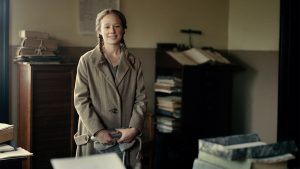 A teenage Astrid Lindgren (née Ericsson) (August Alba) launches what would become a successful writing career by working as an intern at a small town newspaper in rural Sweden in the engaging biopic, “Becoming Astrid” (“Unga Astrid”), available on DVD and video on demand. Photo courtesy of Music Box Films.[/caption]
A teenage Astrid Lindgren (née Ericsson) (August Alba) launches what would become a successful writing career by working as an intern at a small town newspaper in rural Sweden in the engaging biopic, “Becoming Astrid” (“Unga Astrid”), available on DVD and video on demand. Photo courtesy of Music Box Films.[/caption]
In light of the social values of the time, Astrid couldn’t stay in her hometown of Vimmerby. She relocated to Stockholm, where she enrolled in a secretarial training course and took a job to support herself while her pregnancy ran its course. When it was time to give birth, she traveled to Copenhagen, Denmark to have her baby in seclusion, a precaution designed to keep the unwed mother out of the public eye of her homeland. She soon became mother to a newborn boy, Lars, whom she called Lasse (Marius Damslev), leaving the infant in the care of a foster parent, Marie (Trine Dyrholm), until conditions were more conducive to bring her child back home to Sweden.
However, despite her efforts to manage these matters as delicately and pragmatically as possible, Astrid experienced some obstacles. Blomberg, who had promised to marry Astrid once his divorce was final, ran into delays in the proceedings when charges of infidelity were entered in the case, a crime that could land him in jail if found guilty. But, when his sentence of only a fine was handed down, Astrid felt as if she had been strung along in anticipation of a far worse fate, a revelation that led to mistrust and prompted her to decline his proposal. She now faced the prospect of having to bring up Lasse on her own, not an easy option given her personal and economic resources. This was made all the more difficult with no support from either Blomberg or her family, from whom she had become estranged because of her status as a single mother, a shameful taboo at the time.
To help make it possible for Astrid to bring Lasse back to Sweden, she landed a better-paying job with the Royal Automobile Club working as an assistant to a no-nonsense but quietly compassionate boss, Sture Lindgren (Björn Gustafsson). Eventually she had saved enough to claim custody of her son, but she ran into a complication – now that Lasse was a toddler and had been under his foster mother’s care for so long, he had bonded with her, recognizing Marie, not Astrid, as his mother.
[caption id="attachment_10854" align="aligncenter" width="300"] After an affair with her boss, newspaper editor Reinhold Blomberg (Henrik Rafaelsen, left), resulted in an unexpected pregnancy, intern and future author Astrid Lindgren (née Ericsson) (August Alba, right) tries to sort out her situation, circumstances complicated by divorce, single parenthood and a lack of family support as chronicled in the Swedish film biography, “Becoming Astrid” (“Unga Astrid”), now available on DVD and video on demand. Photo courtesy of Music Box Films.[/caption]
After an affair with her boss, newspaper editor Reinhold Blomberg (Henrik Rafaelsen, left), resulted in an unexpected pregnancy, intern and future author Astrid Lindgren (née Ericsson) (August Alba, right) tries to sort out her situation, circumstances complicated by divorce, single parenthood and a lack of family support as chronicled in the Swedish film biography, “Becoming Astrid” (“Unga Astrid”), now available on DVD and video on demand. Photo courtesy of Music Box Films.[/caption]
Needless to say, Astrid was devastated. She saw how attached Lasse had become to Marie and couldn’t bring herself to separate them, opting to leave him in her care permanently. But, when Marie fell ill and her health would no longer allow her to care for her fosterchild, there was no choice but for Astrid to take custody of her son. That proved difficult, given Lasse’s resistance to accepting his “new” mom.
What was Astrid to do? That’s the challenge she faced as a single parent with no financial support other than what she earned from her job and saddled with responsibility for a child who fought to accept her. And, when Lasse contracted a severe case of whooping cough, the challenge grew even greater. But there were solutions to be had, such as those afforded by the unexpected generosity of others. And, given her way with words, a new skill emerged that opened up more doors than she could have ever possibly imagined, opportunities that would be available to her for the rest of her life.
This film, as its title suggests, thus illustrates how Astrid grew into the person she would become, someone who squarely faced her challenges and determined how to overcome them. The sense of personal empowerment that she developed through these experiences would not only distinguish who she was, but would also go on to define the nature of the characters in her writings, most notably those in the Pippi Longstocking books. She confronted her fears and soldiered on, learning the value of what can come from believing in oneself. But that should come as no surprise to anyone who successfully taps into the power of the conscious creation process, the philosophy that maintains we manifest the reality we experience through our thoughts, beliefs and intents – especially those related to our beliefs in ourselves.
Admittedly, Astrid went through something of a learning curve when it came to these matters. When she initially set off for Stockholm, for example, she was unsure that she could rise to the occasion. However, somewhere deep inside herself, she must have known that she could do it, even if unaware of that fact. Thankfully, she came to recognize this for herself, aided by a little reassurance from her father, a realization that emboldened her to fulfill the tasks at hand.
[caption id="attachment_10855" align="aligncenter" width="300"] With son Lasse (Marius Damslev, left), author Astrid Lindgren (née Ericsson) (August Alba, right) bonds with the toddler through the power of story as seen in the biopic about the writer’s formative years, “Becoming Astrid” (“Unga Astrid”), now available on DVD and video on demand. Photo courtesy of Music Box Films.[/caption]
With son Lasse (Marius Damslev, left), author Astrid Lindgren (née Ericsson) (August Alba, right) bonds with the toddler through the power of story as seen in the biopic about the writer’s formative years, “Becoming Astrid” (“Unga Astrid”), now available on DVD and video on demand. Photo courtesy of Music Box Films.[/caption]
In tackling such challenges, Astrid learned how to become quite the problem-solver. She didn’t hesitate to think outside the box, pushing through established limitations that led her to the resources that fulfilled her needs. By giving herself permission to embrace beliefs that left her open to a wider range of possibilities, she thus had access to a greater array of potential solutions, including those that she might have otherwise overlooked.
So where did such an open-minded outlook come from? One need only look to Astrid’s upbringing; even though she was raised under conventional circumstances, she didn’t hesitate to question authority if it didn’t make sense or satisfy her curiosity, no matter how impudent her mother found such thinking and behavior. And, even though it may have caused Astrid some consternation at the time, it infused her with a resolve that would effectively help her to address – and overcome – the challenges she faced later on in life.
Some might see such actions and intents as impulsive, perhaps even weird, implausible or “wrong,” given that they fly in the face of convention. Yet Astrid acted on them anyway, even when potential pitfalls loomed. However, as she came to find out, they ultimately ended up serving her well. By acting upon these intuitive beliefs, she learned the value of paying attention to them, recognizing that one never knows what beneficially fortuitous opportunities they may lead to.
Adopting such a mindset also enables us to sharpen our capabilities for spotting synchronicities, those seemingly meaningful coincidences that often lead us to the connections, resources and circumstances that provide us with exactly what we need. In Astrid’s case, she may not have always been able to see what would arise from her thoughts, beliefs, intents and actions, but they always seemed to work out, presenting her with a long, satisfying and successful life, one that provided both her and her huge following with fulfillment, inspiration and personal empowerment.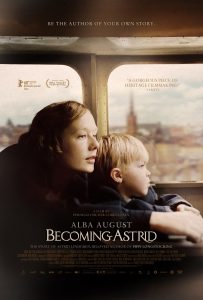
“Becoming Astrid” tells the heart-tugging yet uplifting tale of a beloved talent, showing how her experiences shaped her life and the works it inspired. Beautifully filmed and well acted, the picture captures the look and feel of the period, as well as the persona of its protagonist. However, despite its many assets, director Pernille Fischer Christensen’s latest definitely would have benefitted from more detail about the nature of Lindgren’s writings, as those who are unfamiliar with her works may not readily grasp the relevance between her life and her books. That deficiency, unfortunately, makes the film feel somewhat less than complete. However, there is much to like here, especially for those looking for the kind of movie that, like Lindgren’s books, is easy to cuddle up with on a long, rainy Saturday afternoon.
It’s been said that the apple doesn’t fall far from the tree. And, as stories like this show, it’s also apparent that the tree is a direct outgrowth of its roots. That analogy certainly applies to us both literally and figuratively, and it’s fascinating to see what results, especially when what lies underground is robust and thriving. One could say that Astrid Lindgren had fertile ground to draw from, and we should all be thankful for the bountiful harvest it produced.
Copyright © 2019, by Brent Marchant. All rights reserved.
Thursday, July 18, 2019
This Week in Movies with Meaning
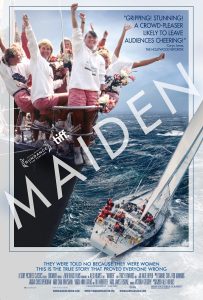



Wednesday, July 17, 2019
‘Maiden’ chronicles a sea change on the high seas
“Maiden” (2018 production, 2019 release). Cast: Tracy Edwards, Jo Gooding, Mikaela Von Koskull, Marie-Claude Kieffer Heys, Dawn Riley, Michèle Paret, Sally Creaser Hunter, Tanja Visser, Claire Russell, Amanda Swan Neal, Nancy Harris, Angela Heath, Sarah Davies, Jeni Mundy, Howard Gibbons, Skip Novak. Director: Alex Holmes. Web site. Trailer.
Fighting for recognition can grow tiresome, especially for those who have had to do so seemingly forever. Yet nothing is gained without making the effort, difficult and frustrating though that may be. Nevertheless, when the attempt succeeds, there’s a tremendous satisfaction that comes from it, not only in terms of realizing a goal, but also in setting a precedent that many may have thought could never be set. So it was for an ambitious crew of adventurers who took on a challenge of global proportions (and implications), as seen in the uplifting new documentary, “Maiden.”
In 1989, 24-year-old Tracy Edwards undertook a task that had never been tried before – fielding an all-female sailing crew for an entry in the Whitbread Round the World Race (now known as the Ocean Race). The arduous yachting event, which at the time covered more than 30,000 miles and was conducted in six legs over eight months, is the world’s longest race of any kind. And, given its sometimes-treacherous conditions, such as those of the South Ocean just north of Antarctica, it tests the mettle of even the hardiest of sailors.
In light of the foregoing, one can only imagine what the neophyte crew was up against when taking on this challenge, not just to be competitive but to even survive the ordeal, one that has had its share of fatalities. What’s more, in a sport that was heavily male dominated at the time, the all-female crew wasn’t taken seriously, often comically derided by chauvinistic journalists who saw the effort as a novelty, a side show or a warm, fuzzy human interest story.
[caption id="attachment_10839" align="aligncenter" width="199"] With the backing of King Hussein of Jordan, the crew of the sailboat Maiden embarks on an epic global journey in the Whitbread Round the World Race as seen in the inspiring new documentary, “Maiden.” Photo courtesy of Tracy Edwards and Sony Pictures Classics.[/caption]
With the backing of King Hussein of Jordan, the crew of the sailboat Maiden embarks on an epic global journey in the Whitbread Round the World Race as seen in the inspiring new documentary, “Maiden.” Photo courtesy of Tracy Edwards and Sony Pictures Classics.[/caption]
These were the obstacles Edwards was up against when she began her campaign to launch her entry in the race. These hurdles were difficult enough in and of themselves, but, to make matters worse, they made it virtually impossible to find backers for this expensive proposition. And, if all this weren’t enough, those who knew Edwards had doubts about her ability to follow through on this enormous commitment, including her own mother, who didn’t hesitate to remind her once wild child daughter that she rarely saw anything through to completion.
So how did Edwards find herself wanting to take up such a daunting challenge? After an idyllic childhood with loving parents, Tracy experienced a series of upsets in the wake of the unexpected death of her father. When her mother remarried to an abusive stepfather, the teenager began a turbulent adolescence, eventually leaving home to be on her own. By her own admission, Tracy lived the life of a party girl, holding various short-term jobs and spending much of her time having fun. But, when she took a job as a hostess on a charter boat, her life took a radical turn.
Tracy discovered a love of boating, something that at last gave her a sense of direction. And, through a chance encounter with a VIP guest on one of her charter excursions – King Hussein of Jordan – she developed a lasting friendship with the monarch, who admired her drive and enthusiasm and urged her to pursue her dreams. In fact, the King would one day come to her rescue by providing the sought-after funding she needed to launch her entry in the Whitbread. With the monetary support she needed in hand, she was on her way, but many more challenges would lie ahead.
[caption id="attachment_10841" align="aligncenter" width="207"] Crew members of the yacht Maiden (from left, Angela Heath, Mikaela Von Koskull, Michèle Paret, Tracy Edwards, Amanda Swan Neal) take on the challenges of the high seas as the first all-female team entered in the Whitbread Round the World Race as depicted in the engaging new documentary, “Maiden.” Photo courtesy of Tracy Edwards and Sony Pictures Classics.[/caption]
Crew members of the yacht Maiden (from left, Angela Heath, Mikaela Von Koskull, Michèle Paret, Tracy Edwards, Amanda Swan Neal) take on the challenges of the high seas as the first all-female team entered in the Whitbread Round the World Race as depicted in the engaging new documentary, “Maiden.” Photo courtesy of Tracy Edwards and Sony Pictures Classics.[/caption]
To get the project afloat, Edwards needed two things: a boat and a crew, both of which proved to be challenges. For starters, yachts are expensive. And, in a sport where virtually all of the participants at the time were men, finding experienced sailing women was difficult. However, given Edwards’s resolve, she was determined to find what she needed, and, before long, with the ample guidance of land-side project manager Howard Gibbons, those needs were met.
The crew came together more easily than expected, almost as if it evolved into place. The members had varying degrees of experience, mostly from little to none, but they all had tremendous enthusiasm for the project, not just for the precedent it was setting, but also for the grand spirit of adventure that this undertaking represented. Edwards was also fortunate to land an experienced first mate, Marie-Claude Kieffer Heys.
As for the yacht, Edwards secured a used vessel that needed work – a lot of it. However, given her access to an enthusiastic team of refurbishers (i.e., the ship’s crew), she had much of the help she needed to make the boat seaworthy and, she hoped, competitive. After months of hard work, the craft was ready to embark on its global journey, an odyssey for which it was christened Maiden.
However, even with a crew in place and a boat ready to sail, the Maiden team still had problems to solve. The biggest challenge was a leadership conflict between Tracy and Marie-Claude, one that led to clashes and often left the crew unsure who was really in charge. It became apparent not long before the start of the race that this arrangement, as ideal as it may have looked on paper, was not going to work in practice, and so Marie-Claude was let go. While this change may have been good for morale, the first mate’s departure left a gaping hole in the crew, one that had to be filled if the effort were to go forward. With this being Tracy’s project, she stepped up to take Marie-Claude’s place, thus saddling herself with the dual role of skipper and first mate, a double dose of responsibility for someone who was not all that experienced at sailing in the first place.
And so, not long thereafter, it was time to shove off. The crew left the port of Southampton on September 2, 1989 on the initial leg of the race, crossing the Atlantic from the UK to Punta del Este, Uruguay. It was the first phase of five more to follow that took Maiden to Freemantle, Australia and Auckland, New Zealand before returning to Punta del Este and Southampton with a stop-off in Ft. Lauderdale, Florida in between. During the journey, the crew would face countless ordeals from howling winds and gargantuan waves to massive icebergs and life-threatening shipboard leaks. There was also the tragic news of the death of a crew member of another boat who was swept overboard and into the icy waters of the South Ocean. And, even with all this, the challenge of the race itself persistently lurked in the background, continuing to test the skills and competitive spirit of the crew even when their very survival was on the line.
[caption id="attachment_10842" align="aligncenter" width="205"]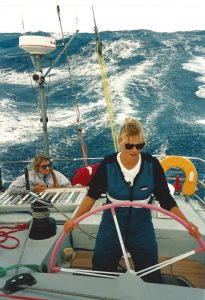 Mikaela Von Koskull (left) and Jeni Mundy (right) steer the racing yacht Maiden through often-unpredictable waters in director Alex Holmes’s new documentary, “Maiden.” Photo courtesy of Tracy Edwards and Sony Pictures Classics.[/caption]
Mikaela Von Koskull (left) and Jeni Mundy (right) steer the racing yacht Maiden through often-unpredictable waters in director Alex Holmes’s new documentary, “Maiden.” Photo courtesy of Tracy Edwards and Sony Pictures Classics.[/caption]
These circumstances undoubtedly pushed the limits and abilities of the Maiden crew (as well as those of all the other entrants). The harshness of these conditions might easily prompt many to ask, “Why would anyone want to endure something like that?” However, it’s at times like these when one really gets to see what he or she is made of, and, for the crew of Maiden, they had much to prove, not only to a skeptical world, but also to themselves.
Pulling off a feat like this calls for a boatload of confidence, a self-assurance that it can indeed be accomplished. That’s where a fervent belief in one’s abilities and convictions comes into play, something made all the more possible by the conscious creation process, the philosophy that maintains we manifest the reality we experience through the power of these intangible building blocks. Were it not for the ardent belief in themselves, the crew of Maiden may have never left home port, let alone embarked on such an incredible journey, one whose demands were both literal and figurative.
A venture like this is not something one can approach casually. It takes vision, an ability to see what needs to be done and how to reach the sought-after goal. And, given that something like this had never been attempted before, there was no rule book for how the Maiden crew could arrive at its destination. Edwards and company had to devise a plan all their own, one that called for them to innovate, to push through limitations and break down supposedly insurmountable barriers, none of which would have happened if they didn’t believe they could.
Such envisioning factored into their plan in many ways. For example, in the run-up to the race, Edwards needed to work out the logistics of this effort, with funding arguably being the biggest challenge. She believed in the validity of her venture despite all of the rejections she received, a conviction that encouraged her to keep asking for support. Somewhere in her mind, she knew that someone would come through as long as she believed in the notion that it was OK to keep asking, a request that was finally fulfilled when she turned to her old friend, King Hussein.
[caption id="attachment_10843" align="aligncenter" width="300"] The crew members of the sailboat Maiden (from left, Tracy Edwards, Mikaela Von Koskull, Michèle Paret (back turned), Jo Gooding, Claire Warren, Angela Heath, Sarah Davies, Amanda Swan Neal, Dawn Riley, Sally Hunter, Jeni Mundy, Tanja Visser) walk the deck of their vessel in the new documentary, “Maiden.” Photo courtesy of Tracy Edwards and Sony Pictures Classics.[/caption]
The crew members of the sailboat Maiden (from left, Tracy Edwards, Mikaela Von Koskull, Michèle Paret (back turned), Jo Gooding, Claire Warren, Angela Heath, Sarah Davies, Amanda Swan Neal, Dawn Riley, Sally Hunter, Jeni Mundy, Tanja Visser) walk the deck of their vessel in the new documentary, “Maiden.” Photo courtesy of Tracy Edwards and Sony Pictures Classics.[/caption]
That kind of belief conviction proved essential during the race itself as well. Given the harsh conditions the crew often faced, especially during the leg from Uruguay to Australia, Edwards and her shipmates were pushed to their limits. At times like that, their personal fortitude (and their personal belief in it) was severely tested, a time when survival was an even bigger reward than winning. Had it not been for such firmly rooted beliefs in themselves, the crew of Maiden may not have come through their ordeal safe and sound – or at all.
Of course, opportunities like this give each of us the chance to prove ourselves, to see what we’re truly capable of achieving. That can be especially significant when we’re attempting to take on the unprecedented, as the women of Maiden sought to do. But that need not be the sole motivation in such situations; sometimes tackling a quest in the spirit of the challenge itself, regardless of the impact of any ancillary considerations, is enough of an incentive, even if others have already accomplished the objective in question. The conditions of the Whitbread race, as previously noted, are difficult enough for anyone to take on, so surviving such a challenge could easily be satisfying in itself, even if other factors involved in the attempt are present. In that sense, the Maiden crew’s effort to conquer the Whitbread is truly inspiring, no matter what gender one might be.
None of this would have happened, however, were it not for the spirit of cooperation involved. Even though Maiden’s entry in the race was Edwards’s brainchild, and even though she carried the lion’s share of the burden in organizing the venture and formulating the team’s strategy, this was a collective effort, one in which each crew member made significant contributions, from the skipper all the way down to the ship’s cook. This is a prime example of co-creation at work, one in which all of the collaborators – both onshore and at sea – played a part in realizing the dream. By pooling the power of their beliefs, the women of Maiden realized the outcome they sought – to succeed at something that had never been attempted and that many skeptics openly scoffed at. Their story is truly one of inspiration, one that proves we can accomplish anything we try when we put our minds – and our beliefs – to it.
Although a little slow at the outset, this inspiring and entertaining documentary is more than just a laudatory exercise about taking on the untried. It’s also an engaging, beautifully photographed adventure saga about an arduous task that supremely tests one’s wits and endurance, regardless of gender or any other defining characteristic. This riveting, spellbinding tale depicts the triumphs and the perils of this venture, often characterized by an edge-of-your-seat quality, a trait rarely seen in documentaries. But, as expected, there is also the film’s pervasive uplifting message, one sure to inspire viewers, particularly young women looking for role models to spur them on to their own personal greatness. And, in that regard, there are few who can top what Tracy Edwards achieved.
The recent rise of the #MeToo movement has had a tremendous impact on society and its outlooks, changing how women are viewed and opening up opportunities that were not previously available. Yet, were it not for the accomplishments of courageous souls like Tracy Edwards and the crew of Maiden, there may not have been the foundation needed to build such an initiative. The achievements of the current movement’s forerunners deserve recognition, even years after the fact, for helping to launch the successes that are emerging now. Indeed, with the sails unfurled, there’s no telling where this voyage will take us.
Copyright © 2019, by Brent Marchant. All rights reserved.
Monday, July 15, 2019
The Cinema Scribe Is Back!
Back from summer hiatus! Tune in for the latest Cinema Scribe segment on Bring Me 2 Life Radio, Tuesday, July 16, at 2 pm ET, available by clicking here. And, if you don't hear it live, catch it later on demand!
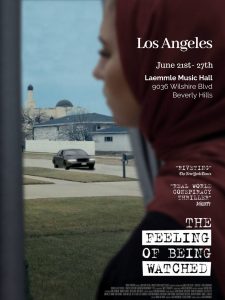
Sunday, July 14, 2019
‘Greener Grass’ surveys our own personal turf
“Greener Grass” (2019). Cast: Jocelyn DeBoer, Dawn Luebbe, Beck Bennett, Neil Casey, Julian Hilliard, Asher Miles Fallica, Mary Holland, D’Arcy Carden, Janicza Bravo, Jaxon Rose Moore, Jim Cummings, Hollyn Johnston, Abigail Kurtz, Allison Kurtz. Directors: Jocelyn DeBoer and Dawn Luebbe. Screenplay: Jocelyn DeBoer and Dawn Luebbe. Web site.
Many of us would probably like to think we’re true to ourselves, being honest and forthright and acting in line with our truest intentions. But are we? What if we let other considerations creep into play, like feeling the need to be overly sensitive so as to cause no offense? Perhaps we might also feel a little competitive with others, succumbing to peer pressure and comparing our situations to theirs, fudging things a bit in the process to appear on par with them. Or maybe there are additional, hard-to-spot concerns that get in the way and cloud our thinking. Such are some of the issues faced by a group of outwardly blissful but inwardly insecure suburbanites in the wacky new comedy, “Greener Grass.”
Ah, Suburbia, the land where all is perfect and the promise of everything wonderful is always unquestionably fulfilled. So it is (or so it would seem) in an upper middle class version of this modern-day utopia, where every mother is an ever-smiling soccer mom, all residents have (or are working on getting) perfect teeth and everybody is so polite that they make Canadians appear downright rude. Life is beautiful.
Or is it? In “Greener Grass,” the filmmakers follow the lives of two couples, Jill and Nick Davies (Jocelyn DeBoer, Beck Bennett) and Lisa and Dennis Wetbottom (Dawn Luebbe, Neil Casey). They live in a hyper-pastel community that resembles the neighborhood in “Edward Scissorhands” (1990) with touches of “The Stepford Wives” (1975, 2004), Martha Stewart and David Lynch thrown in for good measure. They reside in impeccably appointed homes, get around by driving brightly adorned golf carts and watch pleasantly innocuous TV shows like “Bald Guys and Bouquets.”
Jill and Nick are the publicly proud (though privately anxious) parents of Julian (Julian Hilliard), an awkward 7-year-old having trouble fitting in (and controlling his bladder), and Madison (Abigail Kurtz, Allison Kurtz), a newborn whom everyone adores (perhaps a little too much at times). Lisa and Dennis meanwhile are mom and dad to Bob (Asher Miles Fallica), whom they’re having a devil of a time raising, a problem that makes them want more children – and at almost any cost.
Jill and Lisa are (supposedly) best friends, though at times it seems they know little about each other (such as Lisa not knowing that Jill was going to have a second child until she actually sees her friend holding the baby in her arms, something she ”just noticed”). And, despite their allegedly close friendship, they’re also somewhat competitive with one another (though ever so pleasantly, to be sure). One thing’s for certain, however: Lisa envies Jill’s life and quietly (and perhaps somewhat less than consciously) reshapes her own existence to emulate (some might say replicate or even steal) her friend’s reality. But, then, that’s not entirely unexpected; after all, isn’t keeping up with Joneses one of the presumptions of suburban life?
As their lives play out, Jill and Lisa go about their daily affairs with one another and their fellow suburbanites, such as Kim Ann (Mary Holland), a home-based purveyor of designer knives who’s divorcing her husband, Rob (Jim Cummings), and goes out her way to make sure everybody knows about it; Marriott (Janicza Bravo), an African-American hairdresser who could stand to sharpen her skills (and not by the methods she’s currently using); and Miss Human (D’Arcy Carden), the local primary school’s politically correct first grade teacher, an ever-vigilant, hypersensitive worrywart who’s terrified of being seen in a bad light, one that could earn her a reputation as something as unthinkable as “a Native American giver.” These interactions are anything but ordinary, but one can always be sure that they’re eminently courteous.
[caption id="attachment_10831" align="aligncenter" width="300"] Writer-directors Jocelyn DeBoer (left) and Dawn Luebbe (right) star as suburbanites Jill and Lisa, respectively, in the wacky new comedy, “Greener Grass.” Photo courtesy of IFC Films.[/caption]
Writer-directors Jocelyn DeBoer (left) and Dawn Luebbe (right) star as suburbanites Jill and Lisa, respectively, in the wacky new comedy, “Greener Grass.” Photo courtesy of IFC Films.[/caption]
However, despite such pervasive and overarching pleasantries, will life play out as hoped for? Are there unexpected surprises that await the cheery residents? Or is Suburbia not everything it’s supposedly cracked up to be? In a land where the grass always seems greener over the neighbor’s white picket fence, one might ultimately find that it’s not as green anywhere as originally thought.
Having grown up in Suburbia, I can appreciate the bitingly cynical view taken by this strange little film. The pretense, hypocrisy and obliviousness displayed here may be more than a little exaggerated, but, at its core, the film aptly depicts qualities I often found in the daily existence of this “artificial” reality.
Why “artificial?” That’s because of the often-disingenuous nature of this lifestyle, one that all too frequently defies common sense and causes one’s head to spin. It also goes against many of the key concepts of the conscious creation process, the philosophy that maintains we manifest the existence we experience through the power of our thoughts, beliefs and intents. This cinematic indictment of those principles takes no prisoners, calling suburban life on the carpet to expose its “euphemistic” attributes as the phony, sham-like qualities they frequently are.
Perhaps the biggest such disclosure is how readily this lifestyle dispenses with integrity, a quality that goes a long way in characterizing the authenticity of our most heartfelt beliefs. When our intents are infused with this attribute, it significantly impacts what we manifest and how faithfully our creation efforts reflect what it is we’re actually seeking to materialize. The more we formulate beliefs in line with this principle, the more we can harvest desired creations. However, given how often the characters in this film qualify their manifesting beliefs by considerations that fly in the face of integrity and authenticity, such as their preoccupations with insincere politeness and political correctness, the further their creations stray from what they hope to achieve. With matters going awry at seemingly every turn, it should come as no surprise that things often don’t turn out as planned. This should be a potent cautionary tale to those of us – suburbanites or not – who let ancillary concerns creep into the realization of our hoped-for objectives.
The experiences of the characters in “Greener Grass” also reveal the pitfalls of “camouflage” and how it can cloud our perceptions of what’s really going on in our realities. As the name implies, “camouflage” distorts the character of the elements that make up our existence. What we perceive about our reality may not represent what we thought we were creating when, in fact, it indeed does, clearly showing us the nature of our manifesting beliefs, “flaws” and all, even if we don’t readily recognize them as such. Consequently, the true nature of those intents may seem obscured to us, even though we’re the originators of them in the first place. Granted, camouflage can ultimately help us to identify the “errors” in our thinking by attempting to make the distortions apparent. However, if we’re to get the lesson in this, it’s incumbent upon us to see how the results deviate from what we thought we were creating, a realization that can help us to see how we need to adjust the character of our beliefs to get what we want.
For this to happen, though, we must be willing – and able – to eliminate the metaphysical flotsam that pollutes our thoughts, beliefs and intents. We must be prepared to recognize, assess and, as needed, eliminate whatever clutter is gunking up those conscious creation building blocks. This may be easier said than done, especially if we’re unable or unwilling to let go of whatever gets in the way of our manifestation proficiency. For instance, if we can’t bring ourselves to dispense with undue politeness when it’s genuinely not called for, we may realize outcomes that are less than satisfactory, devoid of integrity, shrouded in deceptive camouflage and far removed from expectations, even though they accurately reflect what’s really going on in our beliefs. This can be a hard lesson, but it’s one we need to learn if we want results to live up to what we hope for, something that may prove especially difficult in an environment like the one portrayed here.
[caption id="attachment_10832" align="aligncenter" width="300"] Even self-defense class is characterized by extreme politeness in the version of Suburbia depicted in the new off-the-wall comedy, “Greener Grass,” coming to theaters this fall. Photo courtesy of IFC Films.[/caption]
Even self-defense class is characterized by extreme politeness in the version of Suburbia depicted in the new off-the-wall comedy, “Greener Grass,” coming to theaters this fall. Photo courtesy of IFC Films.[/caption]
Understanding this is crucial for maintaining and holding onto our personal power. When we compromise our beliefs for the sake of other considerations, such as the approval of others, even when that calls for us not being genuine with ourselves, we pay a potentially high price. We may end up giving away our power as a consequence, leaving us frustrated with our outcomes – and ourselves.
One of the factors that can seriously interfere with our efforts under these conditions is the impact of peer pressure. It tends to run rampant in Suburbia, and, in the depiction of it here, it’s on steroids and out of control. In the interest of not causing offense, however, its influence can become effectively paralyzing, especially when everyone in the community is bought into it. With their beliefs colored by this consideration, these suburbanites imprison themselves in a mindset where this concern overrides virtually everything else they hope to achieve. While there’s nothing inherently wrong with showing a little courtesy to one another, it can get out of hand when it reigns supreme. That’s perhaps best illustrated in the film on several occasions when golf cart operators approach an intersection from all four directions simultaneously and no one wants to be the first to proceed after they all stop. The fear of being discourteous in this situation (and essentially everything they do) is so overwhelming that no one can carry on with individual pursuits, leaving them stuck, unfulfilled and, very likely, flush with trepidation. Is that any way to create one’s reality?
The foregoing considerations naturally raise the question, “Is all of this worth it?” Based on what happens here, the answer for many of us most likely would be “no.” When Jill sees many of her expectations go hopelessly wrong, for example, she needs to take stock of her hopes – and their underlying beliefs – if she wants to manifest as an empowered conscious creator – that is, if she can bring herself to do so. That’s a lesson for all of us if we can’t bring ourselves to be who we really are – and seek what we really want.
Destined to be a cult classic, this off-the-wall metaphorical comedy takes viewers in unexpected directions from start to finish. Despite occasional editing/pacing issues, a tendency toward being episodic, some overly silly or underdeveloped bits that don't land as well as they could, and a few too many protracted and repetitive reaction shots, this insightful debut feature from writer-directors DeBoer and Luebbe otherwise serves up an array of insightful, wickedly funny, truly outrageous laughs about life in Suburbia and the false promises often associated with it. Be prepared for something weird, and you’ll be rewarded.
“Greener Grass” has primarily been playing at film festivals, such as the recent Chicago Film Critics Film Festival, where I screened it. However, the picture has secured a distributor and will be receiving a theatrical run this fall. Check local listings for availability.
If ever we doubt our circumstances, we should look to ourselves first for clarification. We should ask ourselves questions like “Are we being true to what we seek?” and “How might we be sabotaging our lives (and for the sake of what)?” The answers could go a long way in giving us clarity about our thoughts, beliefs and intents regarding what we’re doing and why. They might even show us how to spot the errors in our ways – and help us find where the grass truly is greener.
Copyright © 2019, by Brent Marchant. All rights reserved.
Tuesday, July 9, 2019
This Week in Movies with Meaning
Reviews of "Late Night," "The Feeling of Being Watched" and "What We Left Behind," all in the latest Movies with Meaning post on the web site of The Good Media Network, available by clicking here.



Monday, July 8, 2019
‘The Feeling of Being Watched’ examines the perils of privacy
“The Feeling of Being Watched” (2018). Cast: Interviews, Current Footage and Re-creations: Assia Boundaoui, Rabia Boundaoui, Christina Abraham, Iman Boundaoui, Nouha Boundaoui, Oussama Boundaoui, Sohib Boundaoui, Monica Eva Foster (voice), Daron Hagen (voice), Jen Marlowe (voice). Archive Footage: Donald Trump, Peter Jennings, Nacer Boundaoui, Robert Wright Jr. Director: Assia Boundaoui. Screenplay: Assia Boundaoui. Web site. Trailer.
Many of us likely believe that our personal privacy is a right that we’ve lost. Due to increasingly intrusive surveillance of virtually every aspect of our lives by government agencies, we’ve often come to feel that our personal spaces and individual lives are no longer our own. And, because of explanations like national security and waging the war on terror, those measures have thus been justified by those conducting them. Given all that, it may seem like there’s nothing we can do about it, either. However, one community subjected to severe scrutiny has had enough and has begun to fight back, letting those who are doing the surveilling know that they’re now being surveilled as well, a story chronicled in the troubling but inspiring documentary, “The Feeling of Being Watched.”
When Algerian-American journalist Assia Boundaoui began hearing rumors of long-term government surveillance of Islamic residents in Bridgeview, Illinois, the Chicago suburb where she grew up, she began to investigate. The reporter, whose credentials include work for the BBC, National Public Radio, Al Jazeera, VICE and CNN, was troubled by the prospect, even though many of those around her (including her own mother, Rabia) treated the idea somewhat matter-of-factly, something that they had almost come to take for granted. In fact, when Assia awoke one night and saw what appeared to be a strange vehicle parked across the street, she told Rabia about it who replied “It’s probably just the FBI, go back to sleep.” However, sleep was the last thing on Boundaoui’s mind. If the surveillance rumors were true, this was unacceptable if there was no legitimate reason behind it.
[caption id="attachment_10817" align="aligncenter" width="300"] Islamic residents of Bridgeview, Illinois have been surveilled by the government for over a decade in an apparent case of racial and religious profiling, a story examined in the chilling new documentary, “The Feeling of Being Watched.” Photo courtesy of Multitude Films.[/caption]
Islamic residents of Bridgeview, Illinois have been surveilled by the government for over a decade in an apparent case of racial and religious profiling, a story examined in the chilling new documentary, “The Feeling of Being Watched.” Photo courtesy of Multitude Films.[/caption]
Upon looking into the matter, Boundaoui learned that the government launched a surveillance program of the Islamic community in the Chicago suburbs in the wake of the 1993 World Trade Center bombing. Designated “Operation Vulgar Betrayal,” the FBI investigation looked into the role that Islamic organizations and mosques may have played in funneling funds to terrorists. However, as Boundaoui came to discover, the investigation covered more ground than just the targeted organizations; it appeared to engage in blanket surveillance of the community. And, even though Vulgar Betrayal was shut down in 1999 after allegations of religious discrimination and sexual harassment, it was reopened after the 9/11 attacks – and continued long after.
But to what end? That’s the question Boundaoui wanted answered. By her accounts, most Islamic Bridgeview residents lead everyday ordinary lives, holding jobs, raising families and engaging in all of the other routine activities that American citizens typically do (quite the irony given that many of them are themselves American citizens). So why the widespread scrutiny?
As Boundaoui dug deeper into the story, she began running into roadblocks. Local residents were reluctant to speak about their experiences, even though many of them hinted that they had felt inexplicably targeted. But, to make matters worse, she was stonewalled by officials when she sought information about the investigations. This led to the filing of Freedom of Information Act requests to obtain copies of any documents in the government’s possession regarding its surveillance activities. And what she found out was stunning: The FoIA request responses indicated that the government possessed thousands of pages of information about this subject.
However, when Boundaoui asked for the documents in question, she was told that, due to heavy demand for the fulfillment of pending FoIA requests, it would take several years before she could get the first copies of what she wanted – and even then on a snail’s pace delivery schedule. Such government foot dragging, an obvious stalling tactic, led the journalist to file suit in court. But, even with court rulings in her favor, Assia came up against even more troubling revelations, namely, that her name, as well as the names of her mother and siblings, showed up in the records, despite the fact that the material in the documents overall was 70% redacted.
[caption id="attachment_10818" align="aligncenter" width="300"] Algerian-American filmmaker and investigative journalist Assia Boundaoui (right) reviews documents stating that she, her mother Rabia (left) and her brother Oussama (center) were named in secret government surveillance records made available through Freedom of Information Act requests as revealed in the troubling new documentary, “The Feeling of Being Watched.” Photo courtesy of Multitude Films.[/caption]
Algerian-American filmmaker and investigative journalist Assia Boundaoui (right) reviews documents stating that she, her mother Rabia (left) and her brother Oussama (center) were named in secret government surveillance records made available through Freedom of Information Act requests as revealed in the troubling new documentary, “The Feeling of Being Watched.” Photo courtesy of Multitude Films.[/caption]
Suddenly, the investigation turned personal, a troubling thought for a journalist trying to maintain a sense of objectivity. Boundaoui now found herself having to walk a tightrope between uncovering the truth and addressing her own personal privacy concerns. Was the revelation of her name in the documents a government intimidation tactic because of the aggressiveness of her investigation? Or were she and her family part of the ongoing surveillance all along simply because of their Islamic faith? Indeed, were the Boundaouis caught up in a broad-spectrum program of racial and religious profiling with no legitimate justification?
These revelations thus raised the question, where do Bridgeview residents go from here? And is this government surveillance effort limited to just the Chicago suburbs? What is the Islamic community to do?
That’s where this film comes in. In her directorial debut, Boundaoui is blowing the whistle on what has been occurring. She has been taking the documentary to her people, making them aware of what’s going on and encouraging activism to expose the truth. In essence, she has put the government on notice to let the watchers know that they are now being watched.
Efforts like those undertaken by Assia Boundaoui are truly courageous. That’s not to say that such initiatives aren’t scary, but the intrepid journalist and her supporters have not let that hold them back. They have taken their story to Islamic community centers and mosques to spread the word, building a broad base of support and awareness.
[caption id="attachment_10819" align="aligncenter" width="300"] In unraveling the story behind government surveillance of the Islamic residents of Bridgeview, Illinois, filmmaker and investigative reporter Assia Boundaoui reviews thousands of pages of documents in “The Feeling of Being Watched.” Photo courtesy of Multitude Films.[/caption]
In unraveling the story behind government surveillance of the Islamic residents of Bridgeview, Illinois, filmmaker and investigative reporter Assia Boundaoui reviews thousands of pages of documents in “The Feeling of Being Watched.” Photo courtesy of Multitude Films.[/caption]
This kind of effort is a prime example of the conscious creation process in action, the philosophy that maintains we manifest the reality we experience through the power of our thoughts, beliefs and intents. Even if the activists aren’t aware of this philosophy, their actions – and results – illustrate their proficiency at making use of this practice. By getting past their fears and holding a clear vision of what they hope to achieve, they’re making great progress in letting others know what’s going on behind the scenes.
This effort is crucial not only for the protection of the rights of the American Islamic community but for all Americans. After all, if this can happen in one segment of society that is placed under scrutiny, it’s not out of the realm of probability that it can happen to others as well. One need only look at the experience of immigrants coming from other lands these days to see how easy it is to be put under an investigatory microscope – whether it’s warranted or not.
It’s somewhat ironic that the watchers are now being watched, too. After all, as conscious creation maintains, our outer world is a reflection of our inner realm, and, if the watchers believe that they must engage in such surveillance, then it shouldn’t come as any surprise to have their tactic turned back on them. Their efforts are, fittingly, now being mirrored at them, validating that what goes around truly can come around, for better or worse.
[caption id="attachment_10820" align="aligncenter" width="300"] Making the Islamic community aware about covert government surveillance is one of the aims of filmmaker and investigative journalist Assia Boundaoui (left) as chronicled in the revealing new documentary, “The Feeling of Being Watched.” Photo courtesy of Multitude Films.[/caption]
Making the Islamic community aware about covert government surveillance is one of the aims of filmmaker and investigative journalist Assia Boundaoui (left) as chronicled in the revealing new documentary, “The Feeling of Being Watched.” Photo courtesy of Multitude Films.[/caption]
Those who are being unfairly surveilled need a voice to speak for them, and that’s precisely what’s being accomplished by this excellent documentary. It’s a chilling story about a courageous advocate’s efforts to expose a troubling issue and how she has had to balance her coverage of a story that affects her both professionally and personally. Boundaoui’s meticulous storytelling details everything that went into the unraveling of this mystery, showing how she followed an ominous trail of breadcrumbs that led her to where she is now. This is must-see viewing for anyone who feels his or her privacy is threatened – or could be.
“The Feeling of Being Watched” may take a little effort to see, at least in the near term. It has been playing at film festivals, in a limited theatrical run, and at special screenings at mosques and Islamic community centers. In October, however, the film will receive national coverage when it airs on PBS. It should also be noted that this film is a work in progress, one that will be updated as further developments in this story unfold. Viewers should thus be on the lookout for new information as events transpire.
It’s stunning how so many of us have taken the loss of privacy in stride. Something so cherished should be jealously protected, given that it may be difficult to retrieve once it’s gone. In that regard, this film should serve as a wake-up call to those who take this precious freedom for granted. When any of us lose this, it’s a loss for all of us, a true tragedy for a nation that was built on such a formidable and fundamental principle.
Copyright © 2019, by Brent Marchant. All rights reserved.
Saturday, July 6, 2019
‘What We Left Behind’ charts the struggle for creative survival
“What We Left Behind: Looking Back at Star Trek: Deep Space Nine” (2019). Cast: Interviews: Ira Steven Behr, Avery Brooks, Nana Visitor, Terry Farrell, Nicole de Boer, Alexander Siddig, Colm Meaney, Rene Auberjonois, Michael Dorn, Armin Shimerman, Cirroc Lofton, Wallace Shawn, Jeffrey Combs, Andrew Robinson, Penny Johnson Jerald, Marc Alaimo, Chase Masterson, James Darren, Aron Eisenberg, Max Grodénchik, J.G. Hertzler, Casey Biggs, Robert O’Reilly, Hana Hatae, Ronald D. Moore, Rick Berman. Archive Footage: Cecily Adams, Louise Fletcher, Rosalind Chao, William Sadler, Levar Burton, Michael Piller. Directors: Ira Steven Behr and David Zappone. Web site. Trailer.
It’s often sad when a favorite television show goes off the air. But it’s even more regrettable when a series reaches its end without having been given the chance it should have received. That was very much the case for one program that had a decided love-hate relationship among viewers, one that had to fight for every bit of recognition to stay afloat, an effort chronicled in the captivating new documentary, “What We Left Behind: Looking Back at Star Trek: Deep Space Nine.”
In 1993, the “Star Trek” franchise embarked on a new chapter with the debut of a new TV series different from its predecessors, “Star Trek: Deep Space Nine.” Coming after “Star Trek,” the original 1960s network series, and “Star Trek: The Next Generation,” its highly successful syndicated follow-up set 80 years in the future from its forerunner (both of which followed the adventures of their spaceship crews exploring the galaxy), “DS9” was set on a space station through which a myriad of different alien species passed, not far from the planet Bajor. But the differences extended beyond that. It was the first “Trek” series featuring an African-American in charge, Cmdr. Benjamin Sisko (Avery Brooks). Sisko was also the first commander to be a parent, in this case a widowed single father to his teenage son, Jake (Cirroc Lofton).
What’s more, “DS9” was a series that truly went where no one had gone before in a number of respects, dealing with such themes as the role of spirituality in the lives of its characters. This included Sisko, who, upon arriving at the station, was proclaimed Emissary of the Prophets, a physical liaison to a band of enlightened extradimensional beings who brought religion to their devoted followers. It was a title that made the commander uncomfortable and that he embraced reluctantly in spite of attempts to deny it. These were all genuine differences that Sisko’s TV predecessors Kirk and Picard never had to contend with.
On top of this, “DS9” introduced a host of characters and story lines vastly different from anything to come out of the “Trek” franchise, some dark, some edgy and many of them exotic. Among the more inventive characters were Odo (Rene Auberjonois), the station’s shape-shifting security chief who struggled with his fluidic nature in the presence of beings who remained in fixed form all the time; Maj. Kira Nerys (Nana Visitor), the highly spiritual Bajoran station commander who served as Sisko’s first officer; Garak (Andrew Robinson), a refugee from the enemy Cardassian Empire and suspected spy who operated a tailor shop on DS9’s retail promenade; and Capt. Cassidy Yates (Penny Johnson Jerald), a freighter pilot who made regular stops at the station, eventually becoming Sisko’s love interest.
[caption id="attachment_10811" align="aligncenter" width="300"] The very large regular and recurring cast members of “Star Trek: Deep Space Nine” reunite for a documentary retrospective on the series, “What We Left Behind: Looking Back at Star Trek: Deep Space Nine,” soon to be available on DVD and Blu-day disc. Photo courtesy of Fathom Events.[/caption]
The very large regular and recurring cast members of “Star Trek: Deep Space Nine” reunite for a documentary retrospective on the series, “What We Left Behind: Looking Back at Star Trek: Deep Space Nine,” soon to be available on DVD and Blu-day disc. Photo courtesy of Fathom Events.[/caption]
As for the story lines, “DS9” featured a wide array of innovative plot lines. There are too many to detail here, but one that opened doors to many possibilities (both literally and figuratively) had to do with the station’s unique locale. DS9 was positioned in the vicinity of a wormhole connecting its area of space with a distant sector of the galaxy known as the Gamma Quadrant, home to a race of beings known as the Founders. These morphic aliens, relatives of Odo, possessed an extreme dislike and mistrust of their faraway (or not so faraway, thanks to the wormhole) monoform counterparts, beings they disparagingly called “solids.” The wormhole itself was also a special place, serving as a sanctuary for the aforementioned Prophets, a holy place that many of their devoted Bajoran followers called the Celestial Temple. This portal thus became a fertile source of story material for the show, given its enigmatic attributes and its functionality as a transit corridor between far-flung sectors of the galaxy. Imagine the possibilities.
Given the foregoing, one would think that this cutting-edge series should have been a big hit. Unfortunately, nothing could have been further from the truth. In fact, the show’s producers routinely received barrages of venomous hate mail.
So why did fans turn on the show? For starters, many viewers disliked the space station setting, claiming it was too fixed and didn’t afford enough opportunities for adventure and exploration of the unknown, despite the presence of so many diverse influences on site. Then there was the spiritual angle, something that made for plot lines that were seen as “too cerebral” and “overly talky,” with not enough of the action that helped characterize the predecessor series. And, of course, there were some regular characters who were either disliked or seen as unrealistic. While all of these elements were groundbreaking in the “Trek” franchise, they didn’t set well with many diehard fans.
Given the foregoing, “DS9” was faced with the daunting – and ongoing – task of continually having to reinvent itself to survive. Executive Producer Ira Steven Behr, the driving force behind the series (and this documentary), had to come up with ways to keep the show fresh – and to appease disgruntled viewers. This called for some drastic measures, tasks implemented in the “can-do” spirit that typified the efforts of those behind other “Trek” projects. For instance, for viewers who tired of the show’s fixed location, the producers introduced story lines that took the characters off the station on occasion. The presence of the nearby planet Bajor, for example, provided ample fodder for story material, given its rich, diverse cultural, spiritual and historical nature. The DS9 crew was also provided with transportation to ferry them off-station, such as shuttle crafts known as “runabouts” and, eventually, a warship known as the Defiant. The producers even incorporated alien species and characters familiar to “Trek” viewers from other series, such as the inclusion of Lt. Cmdr. Worf (Michael Dorn), a staple from “Star Trek: The Next Generation” who joined the “DS9” cast as a regular during the series’ fourth season. Thankfully, Behr and crew rose to the occasion, regularly rejuvenating the series to keep it afloat and, ultimately, to enable it to thrive for seven seasons as one of television’s most unique productions.
[caption id="attachment_10812" align="aligncenter" width="200"] Ira Steven Behr, executive producer of “Star Trek: Deep Space Nine,” shares his memories of the series in the new retrospective documentary release, “What We Left Behind: Looking Back at Star Trek: Deep Space Nine,” soon to be available on DVD and Blu-day disc. Photo courtesy of Fathom Events.[/caption]
Ira Steven Behr, executive producer of “Star Trek: Deep Space Nine,” shares his memories of the series in the new retrospective documentary release, “What We Left Behind: Looking Back at Star Trek: Deep Space Nine,” soon to be available on DVD and Blu-day disc. Photo courtesy of Fathom Events.[/caption]
But, even with this fine-tuning, the show had other factors working against it that kept the series from setting ratings on fire. For instance, “DS9” was distributed through syndication, mostly to independent stations, which meant it didn’t have a fixed air time across all of the affiliates of its ragtag network. Some stations weren’t kind in their scheduling, either, airing episodes at times that were far from viewer-friendly, such as late at night or on Sunday mornings. Also, the show was frequently subject to schedule changes, especially on stations that broadcast live sporting events, necessitating alternate air times that were often difficult to find. And, because of stagnant ratings, the show’s time slots often didn’t improve over time. It was thus difficult for “DS9” to find a loyal, steady audience, despite the producers’ earnest attempts to cultivate one.
All was not lost, though. Those who appreciated the show’s singularly distinctive attributes came to love the series and stuck by it through its entire run. Also, as the show’s format and narrative were favorably tweaked, it slowly began to attract new fans, including those who may not have given the series a fair shake initially. Yet, even with these gains, “DS9” was still the stepchild of the franchise, lurking in the shadows of its two older relations and its junior sibling, “Star Trek: Voyager,” the wunderkind offering of the UPN TV network launched in 1995.
Interestingly, though, “DS9” has experienced impressive growth in its audience of late, years after leaving the airwaves. Thanks to developments in on-demand viewing options, such as streaming services and physical media like DVDs, the problems associated with inconsistent broadcast schedules have been eliminated, enabling fans to watch episodes on their time and terms. Also, given the serial nature of the show’s overall story line (especially in its last few seasons, another distinguishing quality of “DS9”), these new media have promoted binge watching, making it easier for viewers to follow the unfolding nature of its mythology, enhancing the appreciation and comprehension of this impressive body of work.
On multiple levels. “DS9” is an excellent example of a product of the conscious creation process, the philosophy that maintains we manifest the reality we experience through the power of our thoughts, beliefs and intents. The groundbreaking nature of the series, for instance, represents a wondrously creative breakthrough that, narratively speaking, set the show apart from anything else on television, including other installments in the “Trek” franchise. In so many ways, it truly reflected the familiar tagline of all the “Trek” properties – humanity’s desire to boldly go where no one has gone before. Even if “DS9” didn’t necessarily do that through the locales in which its stories were set, it certainly did so through the kinds of stories it told.
But the influence of conscious creation didn’t end there. The creation of the show was also an exercise in this process by those who brought it to the TV screen. When the production wasn’t going well, for instance, the show’s creative team needed to adjust, making alterations to keep the series afloat. This required a tremendous, concerted effort to push limits while infusing familiarity to keep viewers interested, a creative tightrope if there ever were one. In their own way, the production team’s efforts were themselves as ambitious as the stories they told, quite a feat to be sure.
In carrying out its mission, “DS9” pushed limits on many fronts, including story lines that dealt with relevant and controversial topics, themes that might not have been able to be addressed directly but that could be creatively finessed through the lens of science fiction. Continuing a tradition begun with the original “Trek” series, “DS9” frequently told stories that symbolically tackled issues that likely would have been too hot to handle through literal treatment. Topics like the agony of war, racism, religion, political corruption and treatment of the homeless, for instance, were among the touchy themes that the show covered through its expertly crafted, albeit less-than-veiled, scripts. The show also did much to further the roles of minorities and women, featuring such prominent ethnic characters as the members of the Sisko family, as well as such integral female personalities as Maj. Kira, Capt. Yates, science officer Dax (Terry Farrell, Nicole de Boer) and religious leader Kai Winn (Louise Fletcher). The show even went so far as to present a realistic view of the troubles of a married couple experiencing relationship difficulties, Miles and Keiko O’Brien (Colm Meaney, Rosalind Chao).
Such honesty reflects the heartfelt beliefs of the show’s writers, actors and producers. The degree of integrity that they brought to the show’s episodes is palpable. This series truly was a co-created labor of love for all involved, often without commensurate recognition. Yet the pride in what they were creating is plainly evident in the finished product.
Such efforts infused “DS9” with an incredible energy that in many ways allowed the series to take on a life of its own. As the show’s overarching narrative evolved over the years, including such novel attributes as adopting a continuing serial format, “DS9” aptly reflected the conscious creation principle that everything is in a constant state of becoming. This is true not only for its individual story lines, but also for the acceptance and recognition of the series overall. Even though “DS9” was underappreciated at the time it originally aired, its own character has evolved, from the tolerated stepchild of the “Trek” franchise to a respected sibling in this family of space-faring series. It may have taken more than two decades to reach that point, but it has finally come into its own. Viewers have come to see “DS9” for the great work it is, especially among new and younger fans who have taken to it from the get-go, not wishing it to be something that it was not intended to be, as happened with the series in its early days.
Given that conscious creation maintains anything is possible, that’s true for all endeavors, including the manifestation of entertainment vehicles. There’s an intrinsic validity in all materializations, even those that might not generate widespread acceptance upon their appearance. It’s gratifying to see that the validity of “DS9” is finally getting its due. It truly deserves it.
[caption id="attachment_10813" align="aligncenter" width="300"] The creative staff of “Star Trek: Deep Space Nine” reunites to brainstorm the outline for a hypothetical eighth season premiere episode in the new retrospective documentary release on the series, “What We Left Behind: Looking Back at Star Trek: Deep Space Nine,” soon to be available on DVD and Blu-day disc. Photo courtesy of Fathom Events.[/caption]
The creative staff of “Star Trek: Deep Space Nine” reunites to brainstorm the outline for a hypothetical eighth season premiere episode in the new retrospective documentary release on the series, “What We Left Behind: Looking Back at Star Trek: Deep Space Nine,” soon to be available on DVD and Blu-day disc. Photo courtesy of Fathom Events.[/caption]
The kind of creativity that went into the making of the series spilled over into the making of this documentary as well. “What We Left Behind,” a variation on the title of the series finale, “What You Leave Behind,” is more than just a chronological retrospective look at the show. In addition the archive footage and participant interviews that one typically expects from films like this, this documentary features elements that set it apart from other such works. Most notable is a reunion of the show’s writers and producers, who came together to collaborate on the creation of a story line for a hypothetical eighth season premiere, one that picks up 20 years after the series conclusion. Besides bringing viewers up to date on what has transpired in the interim, this hypothetical episode attempts to address questions left conspicuously (and perhaps deliberately?) open when the broadcast series completed its on-air run. And it’s comforting to note that the show’s creators haven’t lost their touch after all these many years, coming up with a compelling scenario right in line with the qualities that characterized its seven years of predecessor episodes. Personally, I would love to see such a project made, even if only as a standalone production, but, given the logistics involved, it’s highly unlikely. However, as with all of the “Trek” properties, one can always dream, one of the enduring inspiring and hopeful messages to come out of the franchise.
For those who may not have heard of “What We Left Behind,” that may be due to the fact that it was a largely crowd-funded project featured at a one-night-only US theatrical screening on May 13, an offering of Fathom Productions. However, despite this unduly short stint in theaters, it will be available on DVD and Blu-ray disc in August. I can’t wait to get my copy.
For those who missed “Deep Space Nine” on its first go-round, the documentary may be an ideal vehicle for whetting the appetites of the uninitiated, perhaps even spurring enough interest to give the series a second look. And for diehard fans, this is must-see viewing, a film that will delight, revive nostalgic thoughts and maybe even bring a tear to one’s eye. However, even though the show is no longer in first-run production, viewers can take comfort that its legacy lives on, that its profound and creative nature can still be appreciated now and for generations to come, a genuinely inspired body of work capable of touching us all in innumerable ways.
Copyright © 2019, by Brent Marchant. All rights reserved.
Tuesday, July 2, 2019
‘Late Night’ celebrates the joys of reinvention
“Late Night” (2019). Cast: Emma Thompson, Mindy Kaling, John Lithgow, Hugh Dancy, Reid Scott, Denis O’Hare, Max Casella, Paul Walter Hauser, John Early, Jia Patel, Luke Slattery, Ike Barinholtz, Marc Kudisch, Amy Ryan, Bill Maher, Seth Meyers, Jake Tapper. Director: Nisha Ganatra. Screenplay: Mindy Kaling. Web site. Trailer.
No matter how much we may enjoy something, be it food, entertainment or our wardrobe, sometimes we want to shake things up a bit, trying out new offerings to stay fresh and invigorating. For that to happen, however, we often depend on others to make those new options available to us. Meanwhile, the purveyors of those commodities who fail to change with the times may easily be left behind when innovators step up to take their place. Such downfalls are avoidable, though, thanks to the power of reinvention, a prospect explored in the devilish new comedy, “Late Night.”
Talk show host Katherine Newberry (Emma Thompson) has been a staple in late night television for over two decades. As the first woman to host her own long-running late night talk show, she broke new ground in the TV industry, a breath of fresh air who captivated viewers with her commitment to excellence for intelligent and entertaining programming. Unfortunately, after more than 20 years, that fresh air has become a little stale. With no changes in format and content, Newberry’s show has become something of a dinosaur, with languishing ratings and no apparent prospects of turning things around. And, to make matters worse, the host herself is in denial that there’s a problem, insisting that her approach is solid because it’s rooted in quality. However, given the deterioration in the audience, the numbers would appear to disagree. New network president Caroline Morton (Amy Ryan) wants the circumstances to change, because, if they don’t, she’s ready to replace Katherine with someone younger and hipper, a host more attuned to the wants of a changing audience.
One of the problems with the show, observers contend, is that, except for the host, it’s an all-male production. The entire writing staff is made up of men, as are most of the producers, and that’s apparently due to Katherine’s well-known dislike of women, a trait she doesn’t even recognize in herself. Of course, she might get a better sense of that if she spent more time with her staff; as it stands, she doesn’t know her own writers, having not even met most of them (even though she makes great demands of them). To bring a new perspective to things, Katherine’s right-hand man, Brad (Denis O’Hare), suggests that she hire a woman for the writing staff, a decision to which the host reluctantly agrees.
[caption id="attachment_10803" align="aligncenter" width="300"] Katherine Newberry (Emma Thompson), the long-running ringmaster of a late night TV talk show, faces an uncertain future in the wake of falling ratings as seen in the scathing new comedy, “Late Night.” Photo by Emily Aragones, courtesy of Amazon Studios.[/caption]
Katherine Newberry (Emma Thompson), the long-running ringmaster of a late night TV talk show, faces an uncertain future in the wake of falling ratings as seen in the scathing new comedy, “Late Night.” Photo by Emily Aragones, courtesy of Amazon Studios.[/caption]
Enter Molly Patel (Mindy Kaling). The inexperienced chemical plant efficiency expert may seem an unlikely candidate to walk into this environment, but, as a woman and a person of color, adding an Indian female to an aging all-male, all-white writing staff could be just what’s needed to shake up the show – that is, if she’s given a chance. Fitting in is far from easy, with many seeing Molly as little more than a requisite minority hire and some even viewing her as the new department go-fer. What’s more, not only does she not have the backing of her fellow writers, but she also doesn’t seem to receive much support from Katherine, who continues to run the show like the control freak she has always been. If Molly’s going to succeed, she’s going to have to make quite an impression, breaking through a lot of tradition and resistance to change, from the top on down.
With nothing appearing to change, however, the show’s status continues its inexorable slide. Meanwhile, Caroline continues to pressure Katherine to boost the program’s numbers. She also threatens to replace the host with young comedian Daniel Tennant (Ike Barinholtz), a crude, unfunny rising star whom Katherine detests for his tasteless jokes, someone she sees as far from fitting for the franchise she has so carefully built. It becomes apparent something has to give.
The prospect of losing the show has Katherine seriously worried. After all, as she admits, it’s only one of two things in her life that she really cares about, the other being her husband, Walter (John Lithgow), who’s now suffering with advancing Parkinson’s Disease. Having to face the possibility of losing Walter and the show thus puts Katherine’s back up against the wall. But what is she to do?
[caption id="attachment_10804" align="aligncenter" width="300"] Molly Patel (Mindy Kaling), a newcomer to TV comedy writing, struggles to make a name for herself on an all-male, all-white writing staff in a new comedy penned by the actress, “Late Night.” Photo by Emily Aragones, courtesy of Amazon Studios.[/caption]
Molly Patel (Mindy Kaling), a newcomer to TV comedy writing, struggles to make a name for herself on an all-male, all-white writing staff in a new comedy penned by the actress, “Late Night.” Photo by Emily Aragones, courtesy of Amazon Studios.[/caption]
This scenario opens the door for Molly. She convinces Katherine that, as noble as the production of quality TV is, the host needs to show more of her “human” side. She needs to get more in touch with her audience, revitalizing the show’s format with more approachable material and fan involvement. This means relying less on the high-brow content that, although funny, has also put up something of a wall between her and her viewers (especially younger ones). It also requires her to do man-on-the-street bits and other similar material that her late night competitors perform. So, with nothing to lose, Katherine reluctantly gives it a try – and it works, making the biggest splash her show has made in years.
But is it too little too late? That remains to be seen, especially when a scandal surfaces that threatens to undo all of the good work that has helped to renovate the show’s ratings and reputation. Katherine, Molly and crew need to act fast if they’re going to stave off a replacement and an uncertain future. And that’s nothing to laugh about.
When we hit on a formula that works, there’s often a tendency to leave it alone and let it carry on as if it’s got a life of its own. Notions of “letting sleeping dogs lie” and “if it ain’t broke, don’t fix it” readily come to mind. But what if the conditions surrounding that formula start to change and its inventor makes no alterations to keep up with shifting circumstances, insisting that past successes will simply continue on into perpetuity? That could prove to be a problem, one that could even lead to an institution’s demise. One need only look to the experiences of businesses like Blockbuster Video and Borders Books to see what can happen when management rests on its laurels. And the same is true in other areas as well, with broadcast entertainment no exception.
The need to evolve is an essential tenet of survival. It’s also a cornerstone principle of the conscious creation process, the philosophy that maintains we manifest the reality we experience through the power of our thoughts, beliefs and intents. In fact, one of the core concepts that drives it is the idea that everything is in a constant state of becoming, morphing from one form to another in an endless succession of creation, dissolution and reformation.
[caption id="attachment_10805" align="aligncenter" width="300"] Katherine Newberry (Emma Thompson), host of a long-running late night TV talk show, engages in new material, like man-on-the-street segments, in an effort to boost sagging ratings in the delightful new comedy, “Late Night.” Photo by Emily Aragones, courtesy of Amazon Studios.[/caption]
Katherine Newberry (Emma Thompson), host of a long-running late night TV talk show, engages in new material, like man-on-the-street segments, in an effort to boost sagging ratings in the delightful new comedy, “Late Night.” Photo by Emily Aragones, courtesy of Amazon Studios.[/caption]
That’s the lesson Katherine wrestles with in “Late Night.” She is heavily bought into the belief that her show will continue to succeed, no matter what, as long as she sticks to her principles. In the process, she’s also become thoroughly convinced that making changes is utterly unnecessary. Quality work, she believes, sells itself, a self-evident notion that everyone can see as plainly as she does.
Or so she thinks.
What Katherine fails to see is that what appeals to the public one day could easily fall out of favor the next. Remember when diners couldn’t get enough of quiche? But how prevalent is it on menus these days? The same can be said for wine coolers and smoking and TV variety shows and a host of other commodities that had their heydays and subsequently dwindled in popularity or vanished altogether. That’s the risk that Ms. Newberry runs if she’s unwilling to change with the times.
To survive, Katherine needs to adjust her beliefs, drawing upon the input of her intellect and intuition to form new intentions that will allow her and her show to survive. And, even if she’s not especially adept at this, that’s what she has a staff for, one made up of collaborators who are attuned to the pulse of society and what it takes to make their product succeed. Indeed, we don’t have to do everything ourselves; that’s why we have the act of co-creation, whereupon we tap into the talents of like minds to jointly produce grand conceptions that are warmly received by their audiences. This is a principle that goes into the creation of virtually any product, be it a deodorant, a snack food or a late night TV talk show.
It also helps when our creations arise from heartfelt intentions. That’s why Molly encourages Katherine to put herself into the show more than she typically has. Sitting behind a desk for all those years has clearly separated the host from her viewers, so, if she wants to revitalize the show, she needs to reconnect with those who helped make her a star, to allow her personal integrity to come forth and infuse the beliefs she holds that go into making the program work.
[caption id="attachment_10806" align="aligncenter" width="300"]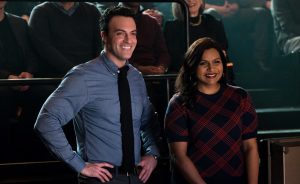 Monologue writer Tom Campbell (Reid Scott, left) reluctantly welcomes the input of newcomer Molly Patel (Mindy Kaling, right) in preparing material for a TV talk show host on shaky ground in the new comedy, “Late Night.” Photo by Emily Aragones, courtesy of Amazon Studios.[/caption]
Monologue writer Tom Campbell (Reid Scott, left) reluctantly welcomes the input of newcomer Molly Patel (Mindy Kaling, right) in preparing material for a TV talk show host on shaky ground in the new comedy, “Late Night.” Photo by Emily Aragones, courtesy of Amazon Studios.[/caption]
Changes like this can indeed be scary, especially when they seem to go against that aforementioned formula for success. But isn’t losing everything an even scarier prospect? (Most of us would probably think so.) That being the case, if Katherine wants to save her show, she mustn’t be afraid to face her fears and move past them, courageously wiping away whatever apprehensions and personal limitations are impeding her. The effort, though daunting, should prove worth it.
The key in all this is introducing a hefty dose of flexibility into our beliefs. That enables us to see a wider range of possibilities, some of them aimed at introducing minor tweaks and others intended to usher in sweeping and perhaps outrageous change. However, as it’s been said, necessity indeed is the mother of invention, and Katherine certainly has a mother of problem to overcome if she hopes to stay on the air. That’s certainly not out of the question; in fact, given that her work involves entertainment, if anything it should be fun. And who knows, if she sees it that way, it just might turn out like that, too.
What a treat it is to see a smartly written, intelligent comedy these days, one that isn’t afraid to poke some major holes in the types of vehicles that claim to be funny but truly aren’t. While “Late Night” could use a little more development in certain parts of the back story, and while some elements are a little too predictable, this otherwise-spot-on tale delivers huge, often-scathing laughs and does so without necessarily having to rely only on one-liners. Kaling, Lithgow and (especially) Thompson serve up fine performances in a story that plays like “The Devil Wears Prada” (2006) set in the entertainment world. It also features guest spots from some of the biggest names in TV comedy, including Seth Meyers and Bill Maher. However, make it a point to pay no attention to the trailer for this one – it really doesn’t do the film justice.
Day-old bread may be inexpensive, but how tasty is it? The same can be said of almost anything that’s hung around a little too long without any enhancements or improvements, including what shows up on our television screens. Legendary actor and producer Desi Arnaz realized that, which is why he insisted that his iconic TV series “I Love Lucy” continually go through changes each season to keep the program fresh – and viewers watching. It’s a lesson all of us should take a cue from when it comes to the manifestation of our own creations – especially if we want ʼem coming back for more.
Copyright © 2019, by Brent Marchant. All rights reserved.
